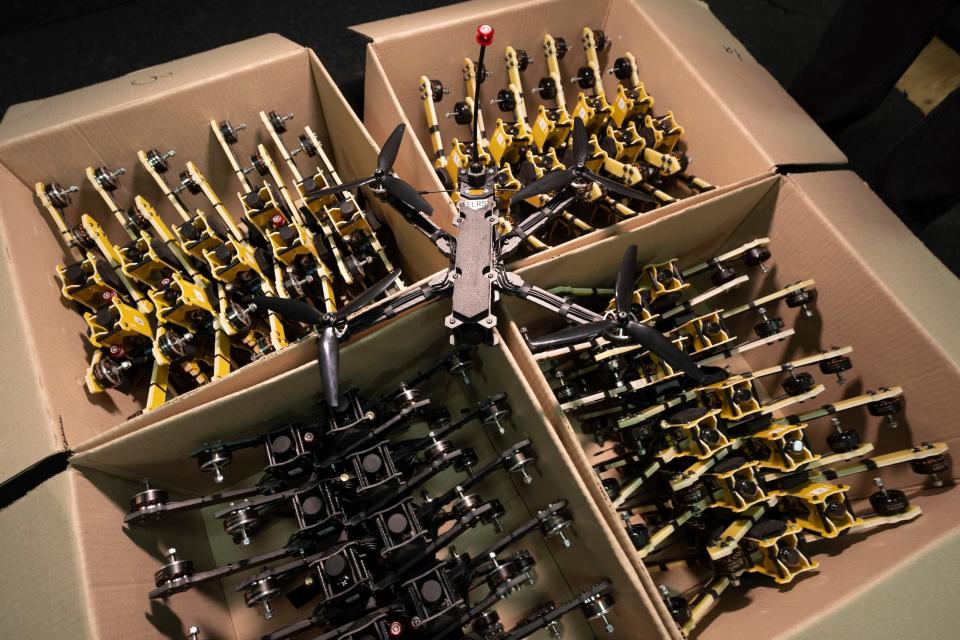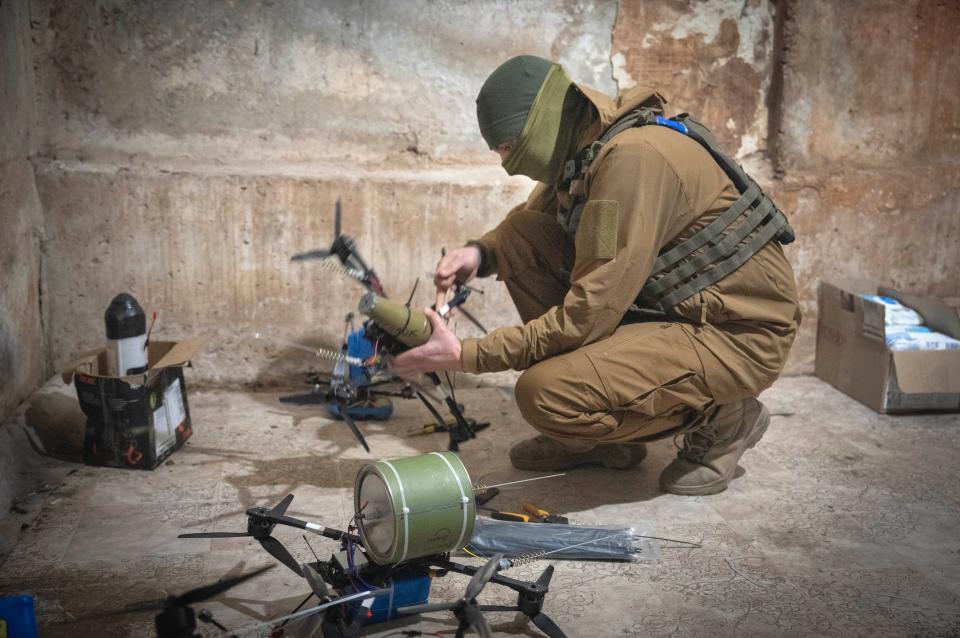-
Russia’s newest drones appear to be guided by fiber-optic cables to prevent jamming and electronic warfare.
-
The technology solves one of the war’s more prevalent problems, but it’s got downsides.
-
Various drone companies have been working on fiber-optic drones.
Some of Russia’s newer drones appear to feature a modification that could help solve a pressing problem for operators in this war.
The drones look to be guided by fiber-optic cables that make the unmanned systems immune to jamming. The introduction of these drones into combat would mark the next stage in the drone arms race, which has both sides rushing to adapt to new challenges.
Evidence that Russia is using fiber-optic drones first appeared back in March, when Ukraine captured a single prototype. But it wasn’t until this month that videos showing systems supposedly wired with fiber-optics cables in use began to show up.
Some combat footage, reportedly showing attacks involving these drones on Ukrainian forces, was shared via open-source intelligence accounts on social media.
How the Russian FPV drones “Knyas Vandal of Novgorod” (KVN) deal with the invaders in the Kursk area. This is only for yesterday and the day before yesterday. pic.twitter.com/BYpZsrdVUF
— nofm_geopolitics (@nofmgeopolitics) August 13, 2024
One of the clearest examples showed a drone attack on a Ukrainian BTR-4 reconnaissance vehicle in Giri, a village in Kursk.
Russian military Telegram channel Siberian Army shared a video last week, too, writing that first-person view drones featuring a fiber-optic cable had been used in the Kursk region amid Ukraine’s ongoing invasion. The account wrote that the drone seen in the footage was “controlled via a fiber-optic cable, which ensures its high accuracy and resistance to electronic warfare.”
And United24, a Ukrainian government-run program that crowdfunds to develop and build drones for the war, said Wednesday in a media report that Russia had begun using drones guided by fiber optics in Kursk, marking “the first known use of such weapons in combat.”
Business Insider was unable to independently verify the footage or claims that these tethered drones with fiber-optic cables are in use.

The appeal of using fiber optics to guide unmanned aerial vehicles is directly related to the problems they purportedly solve; with the widespread use of electronic warfare and radio signal jamming on the battlefield, the need to maintain a stable connection with the operator is key to ensuring the drone reaches its target.
As the FPV drone soars away from its launcher, it deploys a fiber-optic cable.
The advantage, Samuel Bennett, an expert in drones and Russian military weapons development, explained, is that the fiber-optic wire preserves a stable connection, making a drone impervious to electronic warfare, such as the radio jammers found on many of Ukraine and Russia’s military vehicles. The result is a high-quality video transmission and resistance to EW.
Such an adaptation could potentially have profound effects, but it wouldn’t come without issues. It remains unclear how or if fiber-optic drones would reach mass production, although some foreign companies have been hard at work on drones with fiber-optic cable reels.

The biggest problem is likely how the cable would potentially prohibit the drone’s mobility, possibly restricting their use to certain types of missions and locations to prevent collisions or the wire getting tangled or broken.
Likewise, the range from the target to the operator would need to be considered, as the wire limits how far the drone can fly.
That said, fiber-optic drones could be useful in specific situations, such as in environments with intense radio jamming, and may complement the use of radio-dependent unmanned systems.
Regardless, the introduction of this new technology represents yet another shift in how Russia and Ukraine are developing and employing drones on the battlefield. Both sides have been engaged in a drone arms race, adapting their unmanned systems to respond to various problems and copying changes made by the enemy in order to gain an edge or at least maintain parity.
Read the original article on Business Insider
EMEA Tribune is not involved in this news article, it is taken from our partners and or from the News Agencies. Copyright and Credit go to the News Agencies, email news@emeatribune.com Follow our WhatsApp verified Channel





